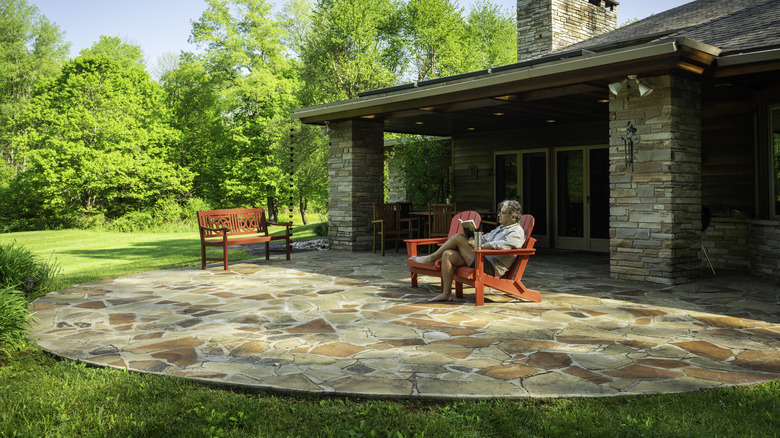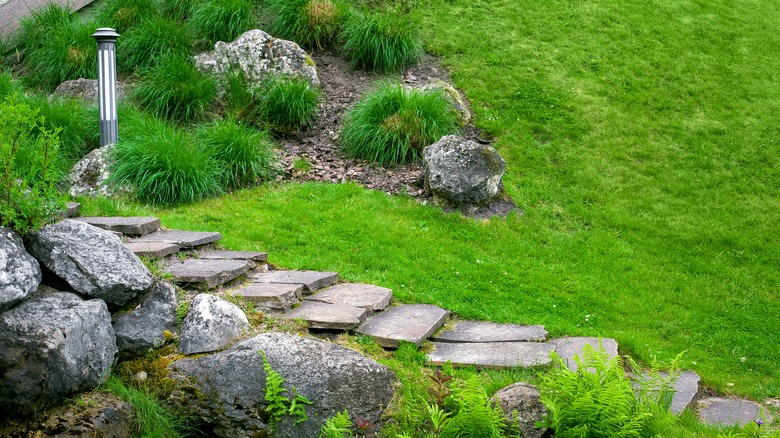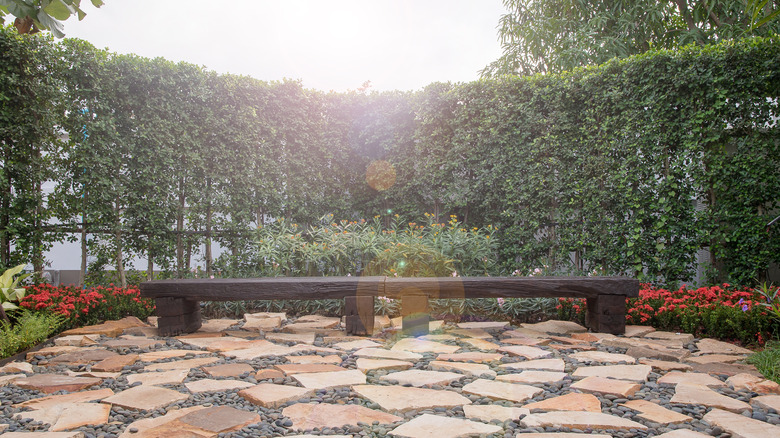Why Flagstone Is The Best Material To Use For Outdoor Patios
Choosing materials when designing your patio can be a little daunting; several of them can look good, but the commitment is enormous. Professionals often recommend going for timeless design choices and not to trend-chase that much because, in the end, your patio will be there for years. Flagstone is one of the most popular materials for homeowners because of this timeless look.
Flagstone is a sedimentary rock similar to sandstone, as they're both made of feldspar and quartz. This mix is held together by other minerals, including calcite, iron ore, and silica. The different mineral mixes will create different color palettes. This natural stone can be used in any hardscaping application, but it's perfect for patios and outdoor areas. Its profile, durability, and look are just some of the features that separate it from other materials like wood.
If you're deciding what material to use on your patio, we'll present some reasons why flagstone is the best material to do it. We'll also reveal the downsides of it, so you can know if it's actually suitable for your specific case.
Why is flagstone the best material for patios?
The biggest advantage of flagstone is its durability; there are flagstone floors in castles in Europe that are thousands of years old and still look the part. Flagstone will keep its appearance for centuries if you manage to take care of it properly, even in high-traffic areas. On top of that, its profile fits perfectly with nature lines while promoting traction, making it somewhat slippery-resistant.
Additionally, the installation process is pretty straightforward. Due to their irregular shapes, flagstone tiles don't need to fit perfectly to look really good. On top of that, it comes in a wide variety of colors, increasing its flexibility.
Maintaining it isn't difficult either, which perfectly ties in with its durability. Clean with a broom or leaf blower for regular maintenance; occasional deep cleans with a powerwasher and a mix of bleach and water will deal with any stains and keep its appearance even more.
What are the disadvantages of flagstone?
The major drawback of installing flagstone on your patio floor is how laborious the whole process can be. If you're working with a professional contractor, this shouldn't be an issue, but if you're doing a DIY project, prepare for some arduous work sessions. It's common to arrange and re-arrange flagstone tiles for hours in order to achieve a nice pattern. Considering flagstone tiles are hefty and irregular, just getting to that end result is tiresome.
If you live in a hot area, flagstone might get too hot to be comfortable. While it's resistant to temperature switches compared to other stones, it's normal for rocks to keep the heat hours after sunlight directly hits them. This is obviously problematic in hot areas, but it's great for colder climates.
Although flagstone has its drawbacks, these tend to be minor compared to its apparent advantages. If you're in the market looking for flooring alternatives for an outdoor area, flagstone is probably the best choice.


